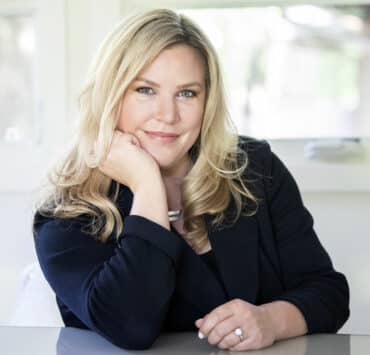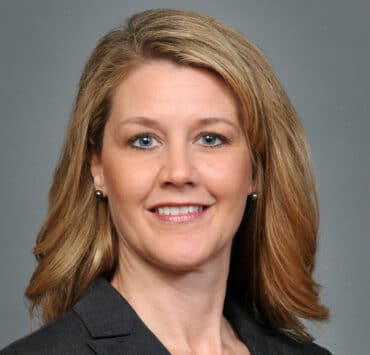|
Getting your Trinity Audio player ready...
|
Alyssa Koo understands that her job is not for the faint of heart. As the managing counsel for gas and electric operations at PG&E for the past two-plus years, she has spent a fair share of her fifteen years with her employer under a microscope. PG&E has more than one hundred thousand miles of overhead electric distribution and transmission lines and fifty thousand miles of gas pipelines that bring power to sixteen million people in northern and central California,
But those familiar with the name of the company outside of California are probably most likely to recognize it because of its role in the San Bruno gas pipeline explosion in 2010 and in catastrophic wildfires in 2017 and 2018—including the 2018 Camp Fire, which claimed the lives of eighty-five people and virtually wiped the town of Paradise, California, off the map.
“This was a terrible tragedy that was ultimately caused by one of our facilities,” Koo explains. “I can’t imagine being one of the 911 dispatchers or first responders assisting with these emergencies, let alone the people who were killed or injured or lost their homes. There are no words to express how awful that fire was.”
The managing counsel says PG&E’s response to the tragedy is exactly why she chooses to work in a role that some might find too stressful.
“I understand the public’s outrage, and I understand how people feel negatively toward us, but I also know that this company is genuinely trying to do what’s right,” Koo says. “I know what we’re doing and how much effort everyone is putting in, and if I don’t stay to help achieve that success, then I’m failing to do my part to help the state of California find solutions to its energy needs—critical and vital needs.”
Response to a Growing Threat
Koo says that the exponentially increasing effects of climate change have hit places like California and its forestland particularly hard. “No overhead electric system is able to function perfectly, but the drastically increased fires—in numbers and intensity—show how climate change is creating major changes for California,” Koo says. “And it’s coming much faster than anyone anticipated.”
The difference lies in the margin for error, the lawyer says. With brush and forested area essentially primed for the most minute ignition, PG&E and other power companies have had to continually work to perfect a power delivery system that can never be 100 percent fool-proof. But the lawyer says her company has taken extensive measures to keep the potential risk as low as possible.
Among other measures, PG&E consulted San Diego Gas and Electric, who had been spurred by more advanced wildfire risk in southern California to implement the proactive switching off power in designated areas (later becoming known as the Public Safety Power Shutoff (PSPS) program) a decade before. “One difficulty was that our territory is so much bigger than theirs,” Koo says. “But still, they had done it and we needed to start somewhere.”
The company would find more answers in Australia, a country that has been struggling with its own massive wildfire issues. “It was a symbiotic exchange; they wound up asking us for advice after we had gotten our own PSPS program up and running,” Koo remembers.
The PSPS, Koo says, always functions as a double-edged sword. While it may help mitigate fire risk, PG&E will inevitably face criticism for cutting off power. The decision of if and when to de-energize relies heavily on PG&E’s meteorology department to evaluate weather forecasts in light of soil and climate conditions. It’s Koo’s job not just to make sure that the methodology and measures taken are legally sound but also to help translate the hard science talk of meteorologists and engineers to the broader company, regulators, and the public.
“To be blunt, these people are brilliant, but they’re not always able to communicate that brilliance to a general audience,” Koo says. The lawyer’s previous extensive patent litigation experience serves her well in helping convey difficult and specialized concepts to all.
A Vital Connection
One of Koo’s proudest moments at PG&E was precisely one of those translations. After the deadly Camp Fire, the Caribou-Palermo line where the fire had originated was de-energized but had to go through several steps before it could be removed. After a conversation with an engineer included an off-hand reference to induction, Koo followed up and realized that there was a small chance nearby power lines could still cause electrons to flow through the de-energized line.
“I knew we needed to do something about it immediately,” Koo remembers. “It set off this whole process where the law department was pushing electrical operations to analyze the situation and implement a solution immediately. The engineers hadn’t put the whole context together and realized any risk, small as it might have been, on that particular line, was unacceptable risk.”
It was a connection Koo says she was able to make partially because of the amount of diversity her career has entailed. After preparing law school applications for the following year, Koo spent a year teaching English in China. She later clerked for the Honorable Andrew Kleinfeld, whose Ninth Circuit Court of Appeals judgeship based her in Fairbanks, Alaska, for a year.
Koo would go on to spend nine years litigating at Heller Ehrman (including working on the Tenaska vs. Bonneville Power Administration case, the largest arbitration involving the US government) before pivoting into IP law. It was the perfect mix of law and scientific advancement for a girl who grew up in what would become Silicon Valley.
After PG&E emerged from bankruptcy in 2020, Koo still says her role comes with its own share of unique challenges. The lawyer admits that because of PG&E’s public reputation, she’s sometimes reluctant to share that the company is her employer.
“Even my friends will joke about PG&E rates or news articles, and it can get tiring,” the lawyer says. “But we’re always looking at creative ways to try to solve very complex issues. Someone needs to be thinking of these ideas and implementing them, or else conditions are not going to improve. Our leadership team and employees are determined to make things better.”
Someone Like You
Alyssa Koo says that even though she’s fully Americanized, feeling like an outsider has always been part of her journey. It has inspired Koo to help women, Asian Americans, and other people of color to advance and feel supported by the community. She has served as the cochair of the Bar Association of San Francisco Minority Scholarship Committee and on committees as a member of the Asian American Bar Association. She is also a board member of the Lawyers’ Committee for Civil Rights of the San Francisco Bay Area.
Coming from the IP law field, which Koo describes as heavily white and male during her tenure, she believes in the value diversity can bring. “Earlier in my career, I didn’t feel I needed to see successful people from similar backgrounds as mine, but as I’ve matured, I’ve recognized its importance more and more,” she says. “When you see someone who comes from your background succeed, it encourages you to persevere; you realize advancement is possible.”
***
Expertise Spotlight
For more than two centuries, Cravath has been known as one of the world’s preeminent law firms. Each of our practice areas is highly regarded, and our lawyers are widely recognized for their best-in-class legal work. Our representation of significant global companies and financial institutions, some of which have retained the firm from their inception, has enabled us to develop an extremely broad-based practice. We are not, and do not strive to be, the largest law firm measured by number of offices or lawyers, but rather to be the firm of choice for clients with respect to their most challenging legal issues, business transactions, and critical disputes.
Cravath is one of the few true partnerships among the top law firms of the world, and we are structured to ensure that all clients receive the benefit of the firm’s overall knowledge and experience. Our lawyers advocate for our clients’ objectives in a highly commercial and pragmatic way to help them identify and implement workable business solutions. We further believe that excellence and diversity go hand in hand and that clients are best served by teams of outstanding lawyers from diverse backgrounds with different perspectives, experiences, and insights.


